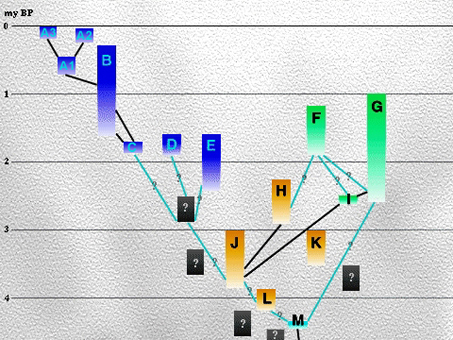| Back to Main Index Page Go to LSC |
| Evolutionary relationships are usually represented as "phylogenetic
trees". Such a tree for the hominids would be a "family tree".
The building blocks for such trees are the bone fragments that comprise the "fossil record". In the case of the hominids, the fossil record is growing all the time, causing much confusion and controversy. This arises from uncertainties about the age and/or the species identity of new finds.
|
The graphical representation of hominid evolution is an Try building a hominid family tree of your own using the "building blocks" you know about and the pointers provided here:
Test your understanding of hominid relationships by examing the
|
